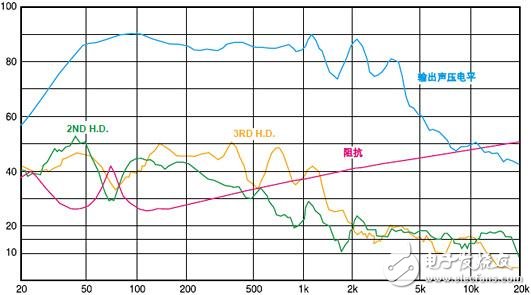The frequency response refers to the phenomenon that when the sound signal outputted by a constant voltage is connected to the system, the sound pressure generated by the speaker increases or decreases with the change of the frequency, and the phase changes with the frequency. The sound pressure and phase The change relationship associated with the frequency is called the frequency response. It also refers to the range of frequencies that the sound system can reproduce within the range allowed by the amplitude, and the amount of change in the signal within this range is called the frequency response, also called the frequency characteristic. The ratio of the maximum value to the minimum value of the output voltage amplitude over the rated frequency range, expressed in decibels (dB). Frequency response is often referred to in the power quality concept as the impedance of a system or metering sensor as a function of frequency.

It refers to the response characteristics of a system or component to sinusoidal input signals of different frequencies. The frequency response characteristics of the system can be directly obtained by two methods: (1) mechanism model - transfer function method; (2) experimental method.
The steady-state response of the system to sinusoidal signals. Steady state is the state of motion of the system after the end of the transition process. The frequency response of the system consists of amplitude-frequency characteristics and phase-frequency characteristics. The amplitude-frequency characteristic indicates the relationship between the increase and decrease of the gain and the signal frequency; the phase-frequency characteristic indicates the phase distortion relationship at different signal frequencies. According to the frequency response, the ability of the system to reproduce the signal and the characteristics of the filtered noise can be relatively intuitively evaluated. In control theory, the stability and other motion characteristics of the system can be analyzed more conveniently based on the frequency response. The concept of frequency response is also important in system design. The introduction of appropriate forms of calibration devices (see Control System Calibration Methods) can adjust the characteristics of the frequency response to improve system performance. An analysis and design method based on frequency response is called frequency response method. It is one of the basic methods of classical control theory.
Also known as frequency characteristics in control engineering, it is the steady-state response of the system to sinusoidal signals of different frequencies.
1. The frequency characteristics can be determined by the above-mentioned transfer function, and can also be determined experimentally. This is particularly convenient for engineering applications for components or systems that are difficult to write differential equations.
2. Because the frequency response method mainly analyzes the system through the graph of the open-loop frequency characteristics, it has the characteristics of intuitive image and less calculation.
3. The frequency response method is not only applicable to linear steady systems, but also to the analysis of pure hysteresis systems and partial nonlinear systems whose transfer functions are not rational.
Mineral Insulated Cable,Copper Mineral Insulation Cable,Copper Core Copper Sheath Cable,Fire Resistant Cable
Baosheng Science&Technology Innovation Co.,Ltd , https://www.bscables.com
